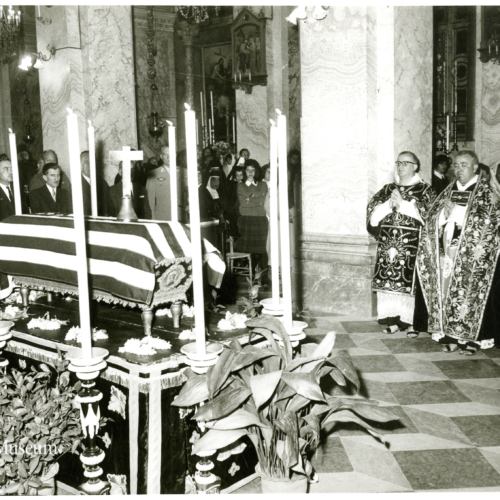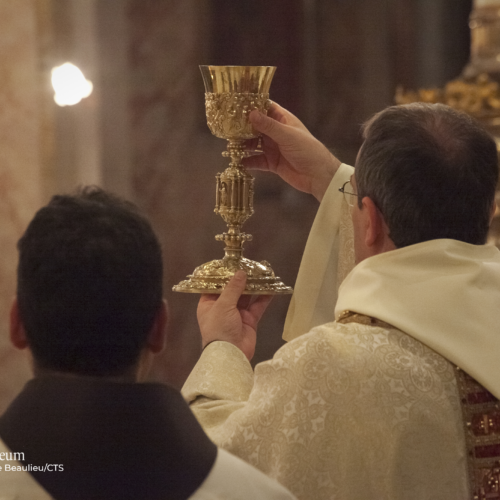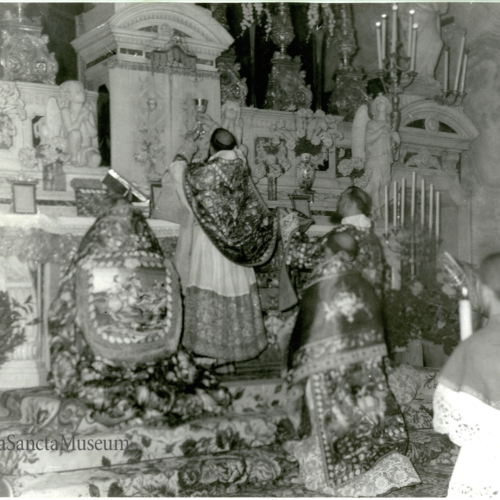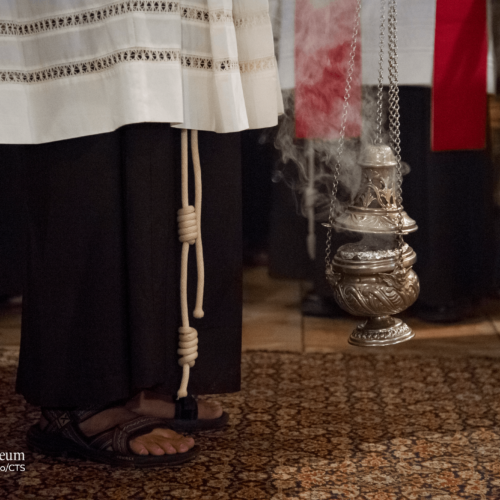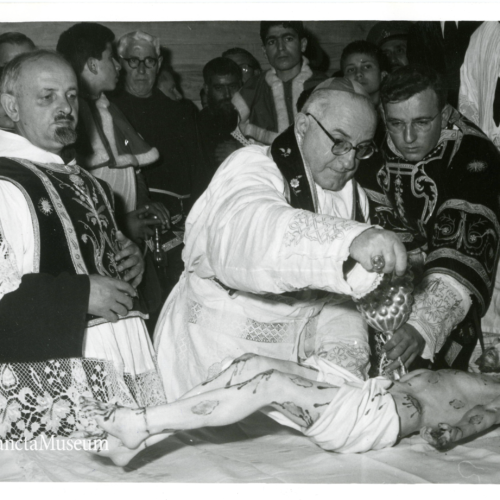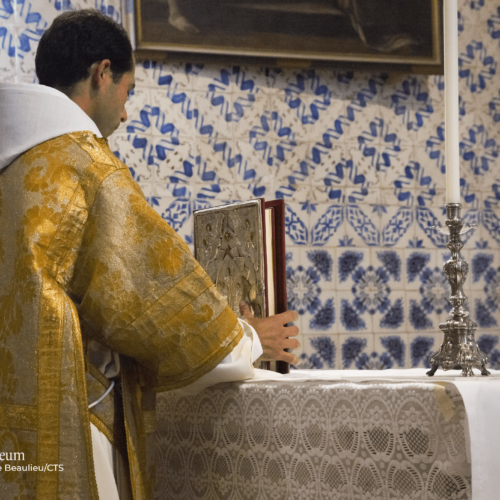The liturgy, the desire to live the Mystery
Jacques Charles-Gaffiot, a historian and member of the Scientific Committee of the Terra Sancta Museum, has been appointed to design a teaching room for the museum on the customs and importance of the liturgy for the Catholic Church.
Jacques Charles-Gaffiot, why did you accept working on a teaching room that will be the heart of the historical section of the Terra Sancta Museum?
The word ‘liturgy’ comes from the Greek leiton – “public” and ergon – “function”, so it is the expression of public worship, exercised in the name of the Catholic Church by people who are specifically designated for this office. Today the Catholic liturgy appears too often as a sort of additional rite or gesture, linked to carrying out religious ceremonies, at the free disposal of everyone. This interpretation proves to be insufficient to translate its ultimate purpose: to make Christ present in substance on the altar and not in a symbolic or metaphorical form. On the eve of his death, on Holy Thursday, it was Christ himself who asked the apostles to perpetuate this celebration for ever: “Do this in remembrance of me” (Luke, 22,19).
The collections presented in the Terra Sancta Museum bear witness to this memory which has been constant, for centuries, in the very place of the Resurrection. The works illustrate the devotion and the prayers of the Franciscans and of millions of pilgrims in the Holy Places. It therefore seemed very important to explain what divine worship means for the Catholic Church, especially for believers of other religions or confessions.
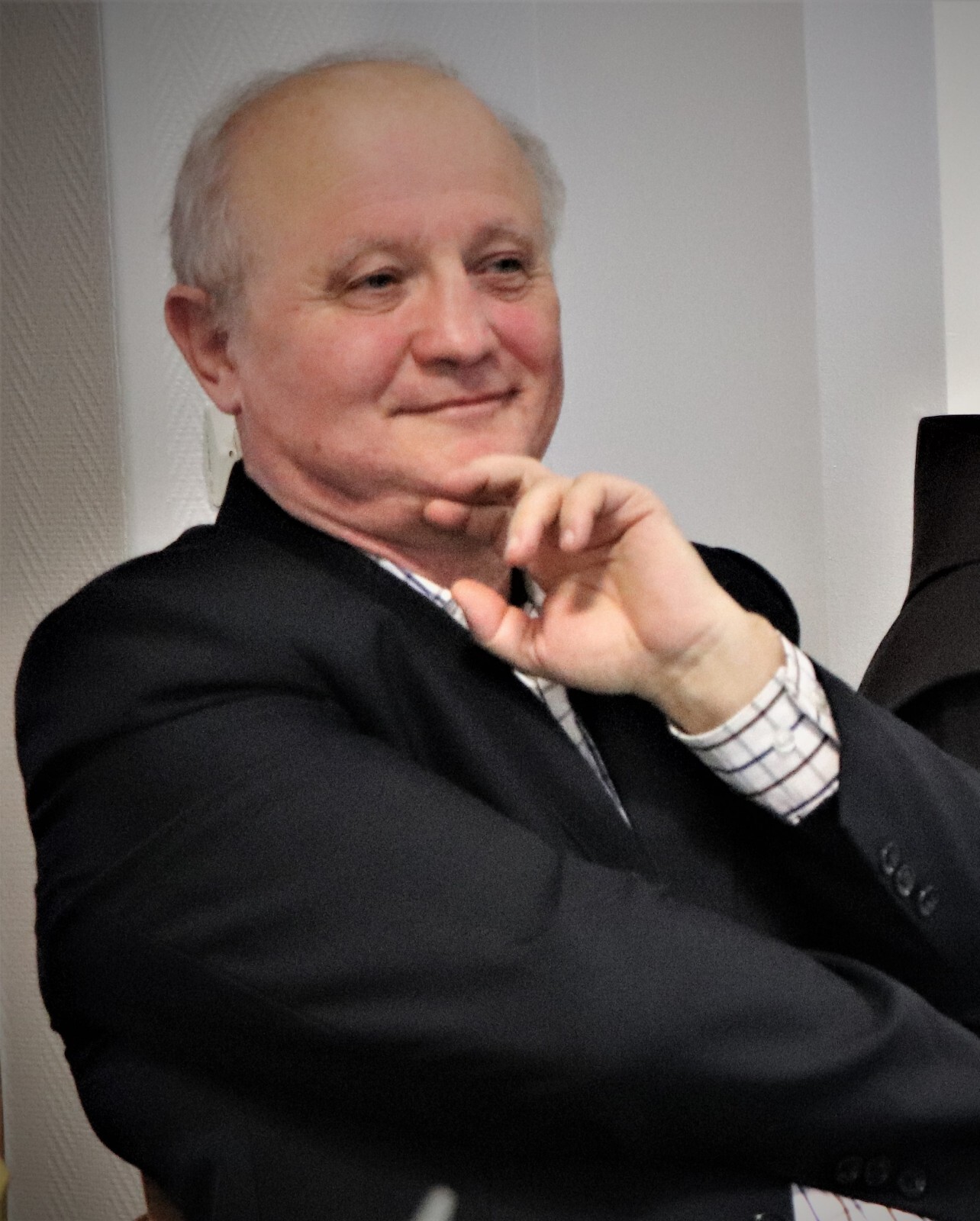
How has the liturgy been transmitted from the times of the apostles to the present day?
First of all by oral tradition when Christian worship was still “underground”, not to mention prohibited. Then, after the Edict of Milan or “Edict of Constantine”, in 313, through a set of written rules, the Apostolic Constitution, which date back to the 4th century and collect together the previous legacies. This is how various liturgical traditions came into being: the Byzantine (or Greek) rite, the Armenian rite, the Syriac rite (the oldest one, with the liturgy of St James the Lesser, the first bishop of Jerusalem), the Maronite rite, the Chaldean rite, and the Coptic (Egyptian) rite. In parallel with the development of the Oriental rites, a Latin ceremonial was formed around the Roman liturgy, which is the oldest form as it dates back directly to the time of St. Peter, a witness of the celebration of the First Supper. Other traditions enrich the Latin rite: the Ambrosian rite (Milan, the second half of the 4th century), the Mozarabic rite (Seville), the Bragan rite (Portugal), and the Gallican rite (in use until the 8th century).
Throughout Lent 2021, on the social media of the Terra Sancta Museum, you will be curating a section to introduce the liturgy through some objects of the museum. How have you chosen them?
In the liturgy there is the desire to get as close as possible to celestial perfection in the administration of sacred things. This desire to “live the mystery” has taken, over the centuries, various forms which the Roman tradition, to limit ourselves to that one, has subsequently succeeded in integrating into its rite.
I have tried to surprise our readers by choosing liturgical objects of which we have forgotten the existence or of which we no longer understand the meaning. And from a list that could be long, the ones that allow us to enter more deeply into the administration of the seven sacraments and in their meaning. This objective cannot be frivolous or inactive because, as the Catechism of the Catholic Church reminds us (III, 124), the discipline of the liturgy (lex orandi) expresses the dogmas of the faith (lex credendi) or, in an even more synthetic phrase: “the Church believes as it prays”!

